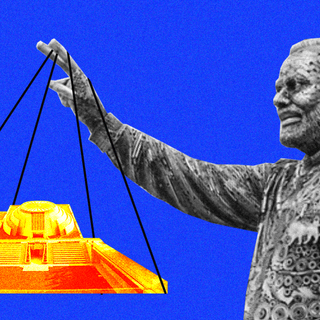
Why We Dislike Things We See Everywhere
The human mind is programmed to seek novelty.

One minute, a piece of information or content is riveting; the next, you can’t help but wait for its time in the sun to pass. It can be a song that refuses to leave your mind; a quote that felt life-defining until last week; a celebrity wedding whose details were scraped with a fine toothcomb over the internet; a meme of a certain notorious boyfriend checking other girls out.
Their intrigue is doomed to pass into ubiquity one day. Then, it becomes a game of hide-and-seek; we hide, and these bits of pop culture passionately seek our attention. What explains this shift in interest? Things and people that quickly occupy our periphery, how do they become subjects of aversion?
We know as humans we thrive in the familiar; we seek things we know and are comfortable with. But every excess has an Achilles’ heel; there comes a point when the craving to find novel elements trumps our desire to stay within the comfortable.
Think of the ever-morphing world of fashion, for instance, where the strongest impulse is to look for “what’s new” or “what’s in season.” Ronald Frasch, president of Saks Fifth Avenue, said in an interview: “The first thing the customer asks when they come into the store is, ‘What’s new?’ They don’t want to know what was; they want to know what is.” Seeing the same raggedy H&M top on five people takes away the value itmay have held at first glance. Excess of everything is bad, as the hairy chestnut goes.
This also explains why we end up “killing” a song when we play it on loop. “There are two main reasons why music may become boring and fall out of favor,” Michael Bonshor of the University of Sheffield, who is an expert in the psychology of music, told The Independent. “The first reason is overexposure to the song. Experiments have demonstrated that appreciation decreases once the novelty of a piece of music has worn off, and that we often become bored with a song that has become over-familiar.”
Related on The Swaddle:
Why We Derive Comfort From Rewatching Familiar Things
The anatomy may respond to this pursuit of new things over the ones we have consumed to a point of exhaustion. The “novelty center” of the brain — the substantia nigra — is closely linked to regions that play a role in learning and memory (the hippocampus and amygdala respectively). Being exposed to new stimuli activates the dopamine pathways in a more robust way than seeing very familiar things.
In an experiment, researchers examined participants’ brain regions using fMRI technology. They showed them: a) images with strongly negative context; b) images that only slightly deviated from familiar ones; c) brand new images the participants had never seen before. The novelty center was activated only in the last scenario. “Only completely new things cause strong activity in the midbrain area,” the researchers concluded.
But herein also lies a paradox. Another cognitive bias, that is articulated through the “mere exposure effect,” argues that people tend to prefer things or people that are more familiar to them than others. At the same time, this effect is reversed — or repeated exposure to things can actually result in less liking it — when we feel the said engagement threatens our identity, according to a study.
According to a tangential theory, people dislike popular things — or things that seem to be everywhere literally and figuratively — because of something called the “normative social influence.” We want to conform to said rules and norms to fit seamlessly as part of a larger group; even if we don’t like the said things, we undertake these arduous tasks anyway. But when this need for conformity boils down to more localized interactions, let’s say among peers or while shopping, there is an impetus to rebel in the tiniest of ways. “If you don’t like playing Fortnite or watching hockey, you can opt-out, quietly and respectfully. Ultimately, no harm will come to you. And yet there’s that fear of missing out or alienating yourself or being rejected,” Headstuff explained. In other words, there is a whiff of catharsis in derisively looking at something people love — and acting as if “we’re sitting a little higher in the pecking order” of ideological tastes. No, we don’t care about Alia Bhatt’s wedding look, excuse me.
All said and done, here’s an oddball for you. Why do certain things seem to appear everywhere once we learn of them? Welcome to the Baader-Meinhof Phenomenon, or the frequency illusion. Much like the name, the phenomenon makes people think the thing they’ve just noticed or experienced seems to be everywhere all of a sudden. “It gives you the feeling that out of nowhere, pretty much everyone and their cousin are talking about the subject — or you’re seeing it everywhere you turn,” a blog explained. So it’s hard to say if things are truly popping up everywhere, or if it’s your colored perception that makes the world seem in disarray.
Safe to say, over the next few days, references to Baader-Meinhof may chase you down internet rabbit holes or real-life happenstances. Will these bits of inspiration inspire wrath, or a sweet appreciation of the complexities of the human mind and the world?
Saumya Kalia is an Associate Editor at The Swaddle. Her journalism and writing explore issues of social justice, digital sub-cultures, media ecosystem, literature, and memory as they cut across socio-cultural periods. You can reach her at @Saumya_Kalia.
Related


How the Obsession With Celebrity Weddings Fuels Unrealistic Expectations of Relationships
